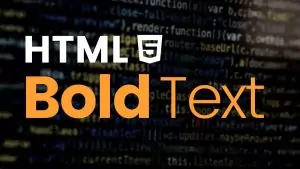In the world of web development, HTML (Hypertext Markup Language) serves as the foundation for creating web pages. HTML consists of various elements that structure and organize content on a webpage. One such essential element is the ‘tr’ element, which plays a crucial role in creating structured tables. In this article, we will delve into the details of the ‘tr’ element and its significance in HTML.
Table Basics: An Overview
Before we dive into the ‘tr’ element, let’s quickly review the basics of HTML tables. Tables provide a systematic way to present tabular data on a webpage, making it easier for users to understand and analyze information. HTML tables are constructed using a combination of rows, columns, and cells.
Introducing the ‘tr’ Element
The ‘tr’ element, short for “table row,” is a fundamental container tag in HTML that defines a row within a table. It acts as a container for table cells (‘td’ or ‘th’ elements) and serves as the building block for creating structured tables. Each ‘tr’ element represents a distinct row within the table structure.
Syntax and Usage
The ‘tr’ element is placed within the opening and closing ‘table’ tags, and it can contain one or more table cells (‘td’ or ‘th’ elements) as its children. Here’s an example illustrating the basic syntax of the ‘tr’ element:
<table>
<tr>
<td>Cell 1</td>
<td>Cell 2</td>
<td>Cell 3</td>
</tr>
</table>In the above example, we have a simple table with one row (‘tr’) containing three cells (‘td’).
Organizing Data with ‘tr’ Element
The ‘tr’ element plays a crucial role in organizing tabular data. By structuring data into rows, it enables easy comprehension and presentation. Each ‘tr’ element represents a unique row, allowing you to logically group related information.
Attributes and Modifiers
The ‘tr’ element supports various attributes and modifiers to enhance its functionality. Let’s explore a few commonly used ones:
- ‘align’ attribute: The ‘align’ attribute aligns the content within a table row horizontally. It accepts values such as ‘left,’ ‘center,’ ‘right,’ or ‘justify’ to specify the alignment.
- ‘bgcolor’ attribute: The ‘bgcolor’ attribute sets the background color for a specific table row. It allows you to differentiate rows visually or highlight important information.
- ‘valign’ attribute: The ‘valign’ attribute aligns the content within a table row vertically. It accepts values like ‘top,’ ‘middle,’ or ‘bottom’ to specify the vertical alignment.
Best Practices and Tips
To ensure well-structured and accessible tables, consider the following best practices:
- Proper table semantics: Use the ‘th’ element for table headers and the ‘td’ element for data cells. This provides semantic meaning and improves accessibility for assistive technologies.
- Consistent column count: Ensure each row within a table contains an equal number of cells. Mismatched cell counts can lead to formatting issues and render the table difficult to interpret.
- Accessibility considerations: Provide appropriate alternative text for table images and use ‘scope’ attributes to associate headers with data cells, aiding screen readers in conveying the information accurately.
Conclusion
The ‘tr’ element is a fundamental component of HTML tables, enabling the organization and presentation of tabular data. By understanding its purpose, syntax, and attributes, web developers can create well-structured tables that enhance the user experience. Remember to leverage the ‘align,’ ‘bgcolor,’ and ‘valign’ attributes to align and style table rows effectively. Following best practices ensures accessible and semantically correct tables that are both visually appealing and functional.
Incorporating the ‘tr’ element proficiently within your HTML tables will enable you to design and display data in a structured and meaningful way. So go ahead, utilize the power of the ‘tr’ element, and create impressive tables that effectively communicate your data to users.
FAQ
Can I have multiple ‘tr’ elements within a single table?
Yes, absolutely! In fact, multiple ‘tr’ elements are commonly used within a single HTML table. Each ‘tr’ element represents a distinct row within the table structure, allowing you to organize and present data in a tabular format.
Is the ‘tr’ tag required for every row in an HTML table?
Yes, the ‘tr’ tag is required for every row in an HTML table. It serves as the container for table cells (‘td’ or ‘th’ elements) and plays a crucial role in defining the structure of the table. Omitting the ‘tr’ tag will result in an invalid table structure.
How can I style the ‘tr’ elements using CSS?
You can style the ‘tr’ elements using CSS to enhance their appearance and make them visually appealing. Here are a few ways to style ‘tr’ elements:
- Use the ‘background-color’ property to change the background color of the rows.
- Apply the ‘color’ property to modify the text color within the rows.
- Utilize the ‘text-align’ property to align the content within the cells horizontally.
- Use the ‘vertical-align’ property to adjust the vertical alignment of the content within the rows.
By targeting the ‘tr’ elements in your CSS stylesheet, you can apply various styles to achieve the desired look and feel for your HTML tables.
What are the common attributes of the ‘tr’ tag?
The ‘tr’ tag supports a few common attributes that can be used to modify its behavior and appearance:
- ‘align’ attribute: This attribute specifies the horizontal alignment of the content within a table row. It accepts values like ‘left,’ ‘center,’ ‘right,’ or ‘justify.’
- ‘bgcolor’ attribute: The ‘bgcolor’ attribute allows you to set the background color for a specific table row. It helps differentiate rows visually or highlight important information.
- ‘valign’ attribute: The ‘valign’ attribute determines the vertical alignment of the content within a table row. It accepts values such as ‘top,’ ‘middle,’ or ‘bottom.’
These attributes can be added to the ‘tr’ tag to customize the alignment and appearance of the table rows.
Can I nest other HTML elements within a ‘tr’ tag?
The ‘tr’ tag is designed to contain table cells (‘td’ or ‘th’ elements) and not other HTML elements. The ‘tr’ element itself cannot directly nest other elements. However, you can add content, such as text or images, within the table cells (‘td’ or ‘th’ elements) contained within the ‘tr’ tag. The table cells allow for nesting additional HTML elements if necessary.
Remember, maintaining proper table structure and adhering to HTML standards is crucial for creating accessible and well-formed tables on the web.
Follow us on Reddit for more insights and updates.





Comments (0)
Welcome to A*Help comments!
We’re all about debate and discussion at A*Help.
We value the diverse opinions of users, so you may find points of view that you don’t agree with. And that’s cool. However, there are certain things we’re not OK with: attempts to manipulate our data in any way, for example, or the posting of discriminative, offensive, hateful, or disparaging material.